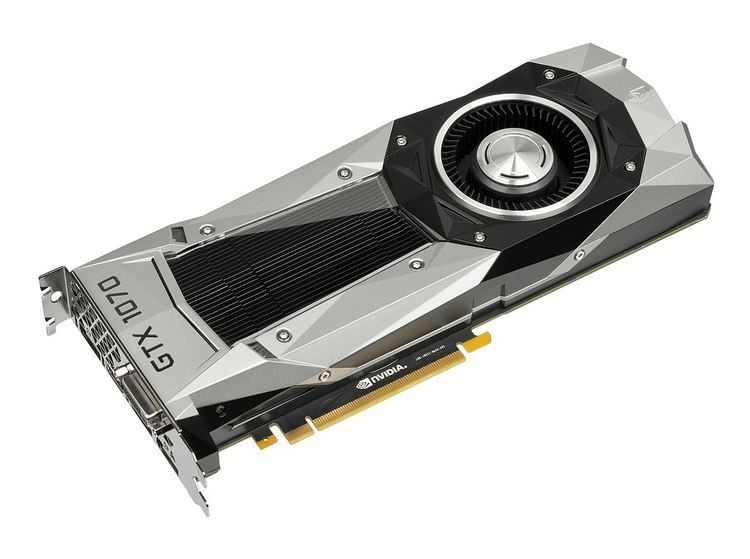Release date May 2016 Architecture Pascal | Codename GP10x Models GeForce GTX Series | |
 | ||
Fabrication process and transistors 3.3B 14 nm (GP107)4.4B 16 nm (GP106)7.2B 16 nm (GP104)12B 16 nm (GP102) Entry-level GeForce GTX 1050GeForce GTX 1050 Ti | ||
GeForce GTX 10 Series is a series of graphics processing units developed by Nvidia as a successor to the GeForce 900 Series. The Pascal microarchitecture is the successor to the Maxwell microarchitecture and incorporates TSMC's 16 nm FinFET technology. It also incorporates Samsung's 14 nm FinFET technology for Nvidia's GP107 chips.
Contents
Architecture
The microarchitecture of the GeForce 10 series is named Pascal, after the 17th century French mathematician Blaise Pascal, and was presented on May 6, 2016.
Nvidia has announced that the Pascal GP100 GPU will feature four High Bandwidth Memory stacks, allowing a total of 16 GB HBM2 on the highest-end models, 16 nm technology, Unified Memory and NVLink.
New Features in GP10x:
Volta
After Pascal, the next architecture will be codenamed Volta, after the 18th century Italian physicist Alessandro Volta. Volta was to be the direct successor to Maxwell but in 2014 Nvidia announced that Pascal was following Maxwell "to take advantage of stacked memory and other innovations sooner."
Founders Edition
Announcing the GeForce 10-series products, Nvidia has introduced Founders Edition graphics cards versions both of GTX 1060, 1070, 1080 and 1080 Ti. These are what was previously known as reference cards, that is which were designed and built by Nvidia and not by its authorized board partners. The Founders Edition cards have a die cast machine-finished aluminum body with a single radial fan and a vapor chamber cooling (GTX 1080 only), an upgraded power supply and a new low profile backplate (1070, 1080, 1080 Ti only). Nvidia also released a limited supply of Founders Edition cards for the GTX 1060 that were only available directly from Nvidia's website. Founders Edition cards prices (with the exception of the GTX 1080 Ti) are greater than MSRP of partners cards, however some partners' cards, incorporating a complex design, with liquid or hybrid cooling may cost even more than Founders Edition.
GeForce 10 (10xx) series
GeForce 10 (10xx) series for notebooks
The biggest highlight to this line of notebook GPUs is the implementation of configured specifications close to (for the GTX 1060-1080) and exceeding (for the GTX1050/1050Ti) that of their desktop counterparts, as opposed to having "cut-down" specifications in previous generations. As a result, the "M" suffix is completely removed from the model's naming schemes, denoting these notebook GPUs to possess similar performance to those made for desktop PCs, including the ability to overclock their core frequencies by the user, something not possible with previous generations of notebook GPUs. This was made possible having lower TDP ratings as compared to their desktop equivalents, making these desktop-level GPUs thermally feasible to be implemented into a notebook chassis with better thermal dissipation solutions.
